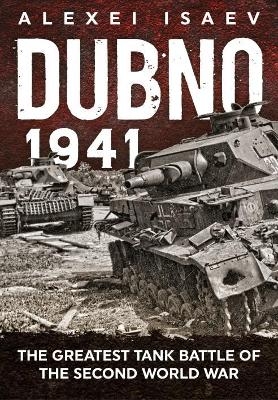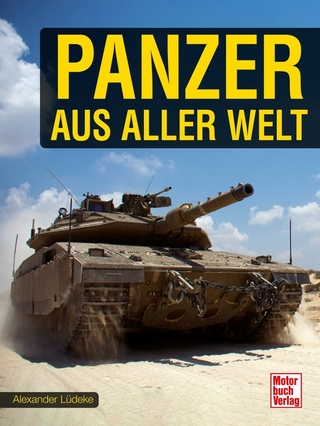
Dubno 1941
Helion & Company (Verlag)
978-1-911628-43-9 (ISBN)
In June 1941 - during the first week of the Nazi invasion in the Soviet Union - the quiet cornfields and towns of Western Ukraine were awakened by the clanking of steel and thunder of explosions; this was the greatest tank battle of the Second World War. About 3,000 tanks from the Red Army Kiev Special Military District clashed with about 800 German tanks of Heeresgruppe South. Why did the numerically superior Soviets fail? Hundreds of heavy KV-1 and KV-2 tanks, the five-turret giant T-35 and famous T-34 failed to stop the Germans.
Based on recently available archival sources, A. Isaev describes the battle from a new point of view: that in fact it's not the tanks, but armoured units, which win or lose battles. The Germans during the Blitzkrieg era had superior tactics and organisations for their tank forces. The German Panzer Division could defeat their opponents not by using tanks, but by using artillery, which included heavy artillery, and motorized infantry and engineers. The Red Army's armoured units - the Mechanized Corps - had a lot of teething troubles, as all of them lacked accompanying infantry and artillery. In 1941 the Soviet Armoured Forces had to learn the difficult science - and mostly 'art' - of combined warfare. Isaev traces the role of these factors in a huge battle around the small Ukrainian town of Dubno. Popular myths about impregnable KV and T-34 tanks are laid to rest. In reality, the Germans in 1941 had the necessary tools to combat them.
The author also defines the real achievements on the Soviet side: the blitzkrieg in the Ukraine had been slowed down. For the Soviet Union, the military situation in June 1941 was much worse than it was for France and Britain during the Western Campaign in 1940. The Red Army wasn't ready to fight as a whole and the border district's armies lacked infantry units, as they were just arriving from the internal regions of the USSR. In this case, the Red Army tanks became the 'Iron Shield' of the Soviet Union; they even operated as fire brigades. In many cases, the German infantry - not tanks - became the main enemy of Soviet armoured units in the Dubno battle. Poorly organized, but fierce, tank-based counter-attacks slowed down the German infantry - and while the Soviet tanks lost the battle, they won the war.
Isaev Alexey was born in 1974 and went on to study Physics and Mathematics; he now holds a PhD in Russian History. He is the author of approximately 20 titles - dedicated mostly to Eastern Front battles such as the 1941 Campaign, Stalingrad, Operation 'Bagration' and Berlin 1945. He considers himself a disciple of David Glantz and is the main Russian opponent of the infamous 'Icebreaker' theory (V. Suvorov). In 2007- 2010 he worked in the Russian State Institute of Military History and in 2012-2013 he took part in preparing the new official Russian history of the war (Great Patriotic War 1941-1945 in 12 volumes). Isaev is the author of the screenplay of the successful 18-part Russian TV documentary 'Great War', which is dedicated to the war during 1941-1945. He has spent many years in archival research, with the main method being to compare German and Soviet archival sources: "Only the comparison of data from both sides of the frontline could provide answers to key historical questions about the roots of victory and defeat." Isaev usually tries to compare documents with his own visits to the locations of great battles and he is especially interested in the operations of armoured units during the Second World War.
| Erscheinungsdatum | 02.06.2019 |
|---|---|
| Zusatzinfo | 128 b/w photos, 4 b/w ills, 16 tables, 12 b/w maps, 8 colour maps |
| Verlagsort | Solihull |
| Sprache | englisch |
| Maße | 170 x 245 mm |
| Themenwelt | Natur / Technik ► Fahrzeuge / Flugzeuge / Schiffe ► Militärfahrzeuge / -flugzeuge / -schiffe |
| Geschichte ► Allgemeine Geschichte ► 1918 bis 1945 | |
| Geschichte ► Teilgebiete der Geschichte ► Militärgeschichte | |
| Sozialwissenschaften ► Politik / Verwaltung | |
| ISBN-10 | 1-911628-43-7 / 1911628437 |
| ISBN-13 | 978-1-911628-43-9 / 9781911628439 |
| Zustand | Neuware |
| Haben Sie eine Frage zum Produkt? |
aus dem Bereich


